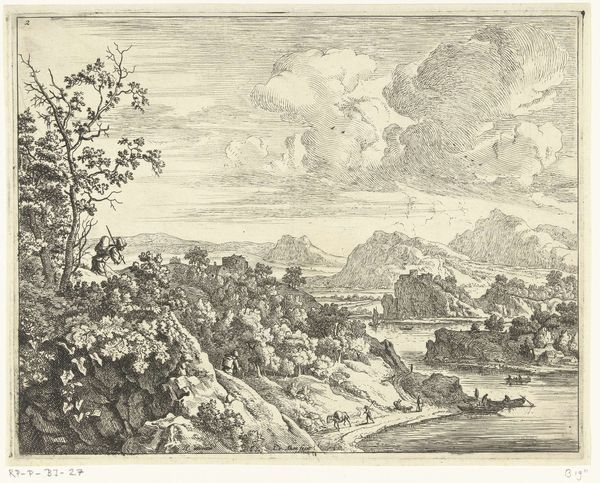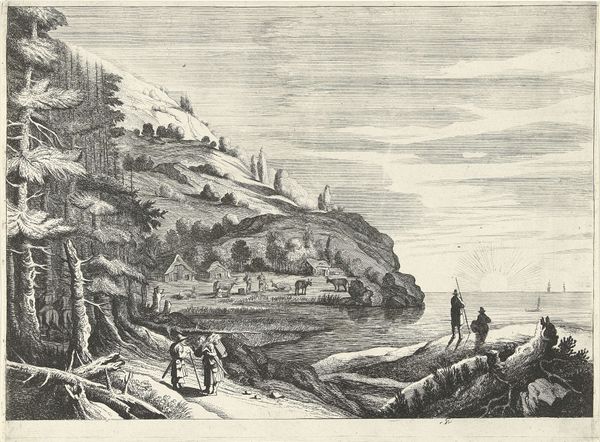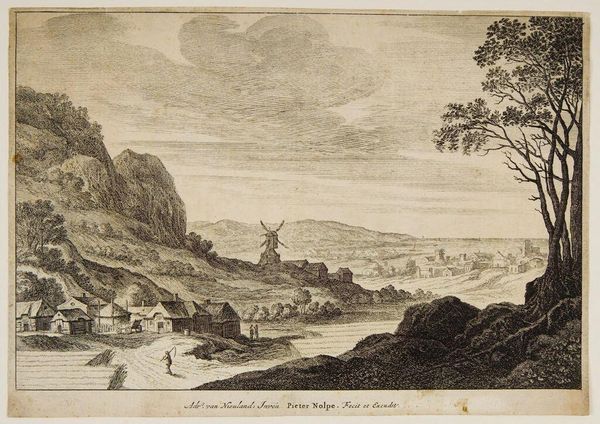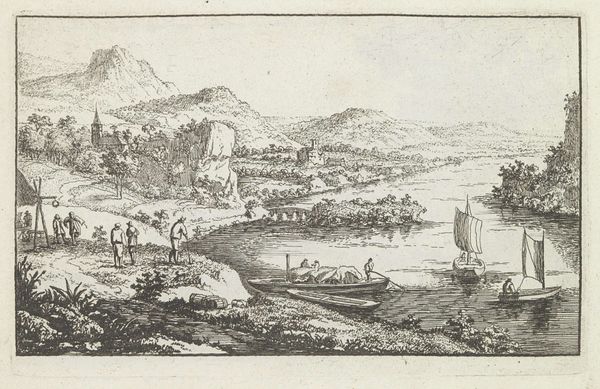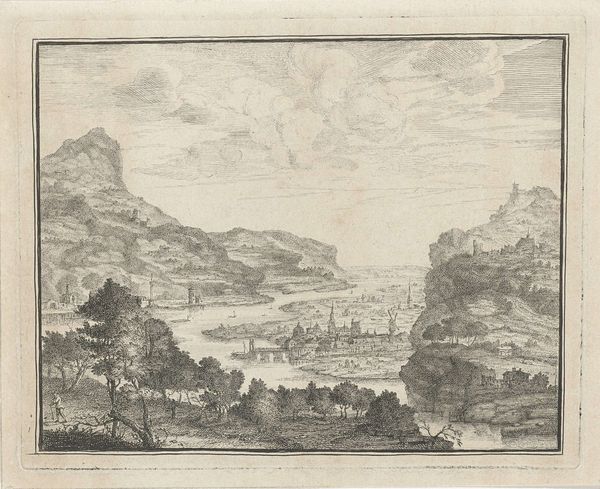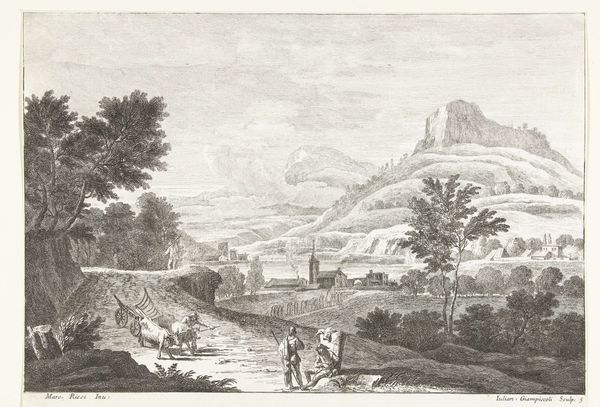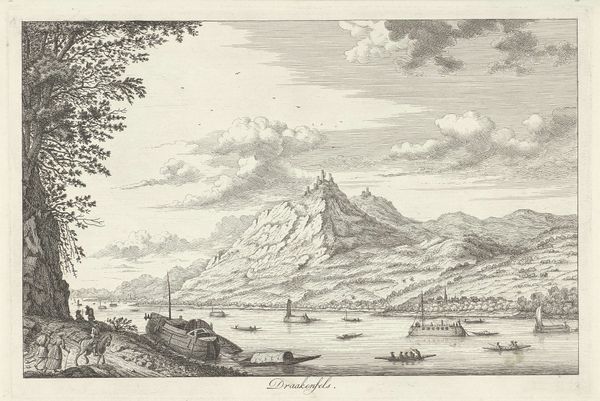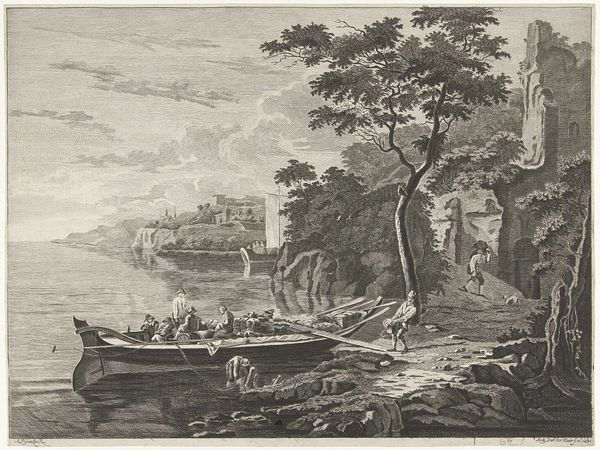
print, engraving
#
baroque
# print
#
landscape
#
figuration
#
cityscape
#
genre-painting
#
engraving
#
realism
Dimensions: height 285 mm, width 377 mm
Copyright: Rijks Museum: Open Domain
Curator: Immediately, I am drawn to the activity, the tension—a whole community working together! Editor: Indeed. Let’s delve into "Italian Landscape with Fishermen," a print crafted by Willem van Lande around 1635 to 1650. The artist worked with engravings, demonstrating both a landscape and genre-painting sensibility in a Baroque style. It's realism imbued with Baroque dynamism. Curator: The pulling… it reminds me of communal labor rituals, of shared burden and shared reward, but with something more… it evokes a certain vulnerability; humans subjected to labor as a fact of their condition. What can you tell me about its imagery? Editor: Well, landscapes in Dutch art often carry symbolic weight, reflecting societal values or commenting on humanity's place in the world. Fishing, in particular, can represent reliance on nature's bounty, but also alludes to biblical associations; in effect, human labor provides and serves. Van Lande places them centrally in the landscape, which both monumentalizes and submits their labor, almost as if it were the very pulse of the setting itself. Curator: That makes me think of other artists portraying similar labor… Is there anything historically significant here in its context? Is he commenting on their access to market? Was he a patron of social change or awareness? Editor: Lande was influenced by a broad school of artistic production around Haarlem in the 17th century. However, most sources place this engraving as a part of a larger catalog that included a few named pieces in the Baroque tradition. He could simply be re-imagining older tropes without overtly challenging or even participating in discourses around production. But this makes me return to your previous comments, about the sense of emotional, primal labor. Curator: That the fishermen look so closely interwoven with the landscape; the very act of pulling is like pulling a thread through reality. Even at rest the figures appear in states of labor; very baroque in sensibility! Editor: The work underscores enduring patterns. These types of visual images had the potential to subtly reinforce the symbolic and lived relationship between land, labor and society; very baroque, yes! Curator: Indeed, the landscape's a palimpsest for human hands. Thanks to all these points, the image resonates long past its creation. Editor: It certainly does; a reminder of the stories embedded within seemingly simple scenes.
Comments
No comments
Be the first to comment and join the conversation on the ultimate creative platform.
